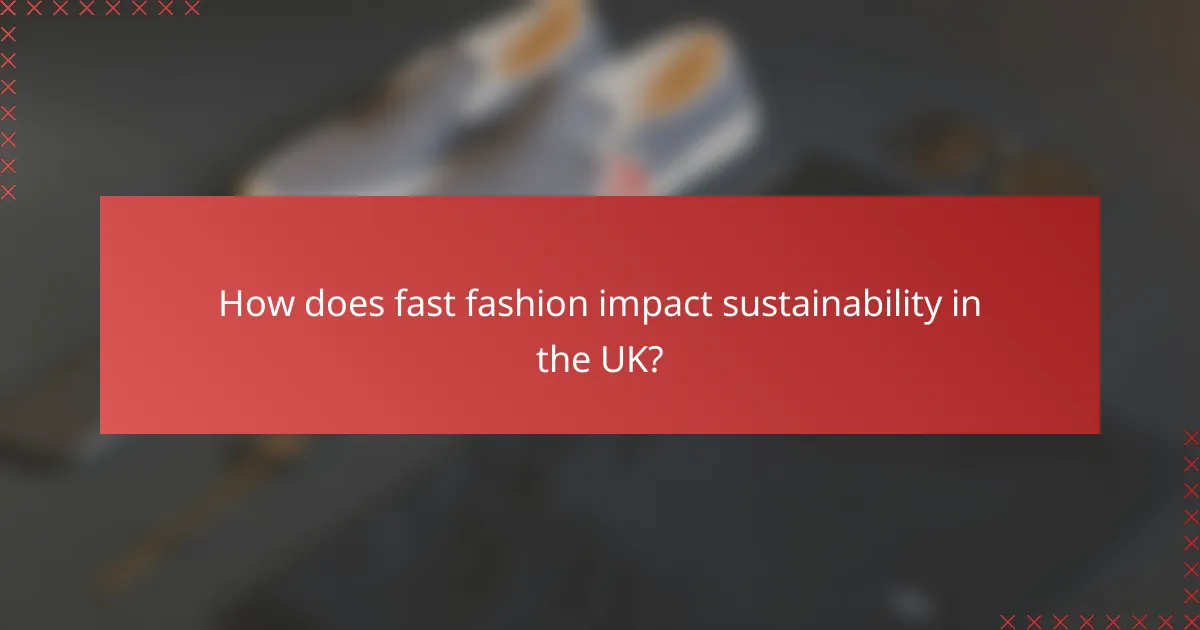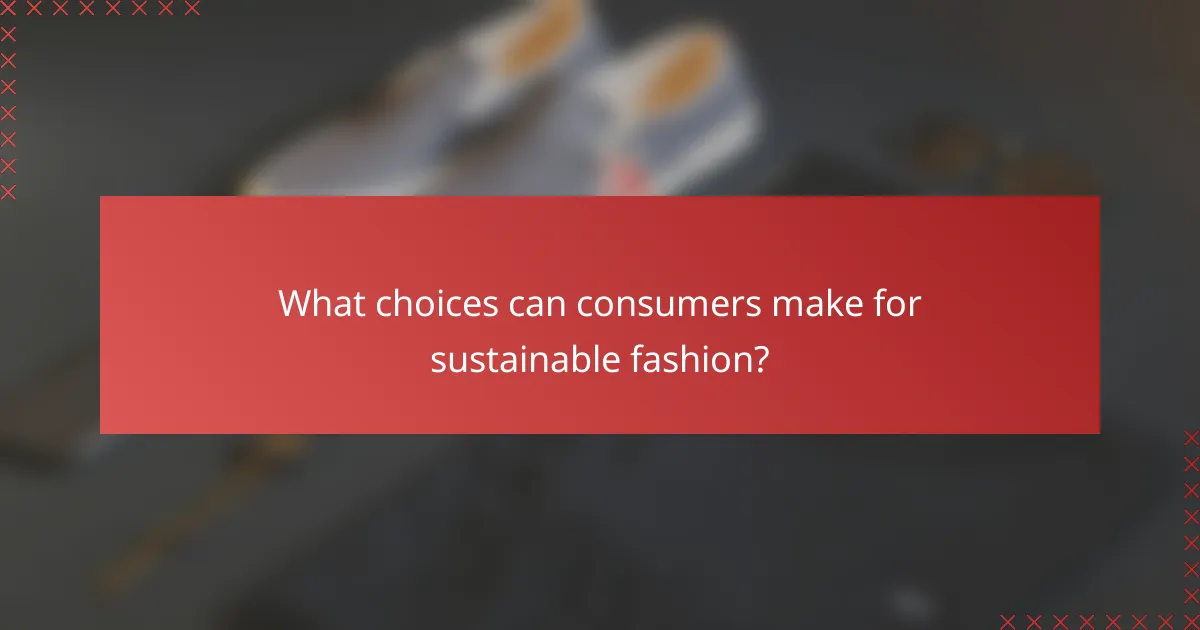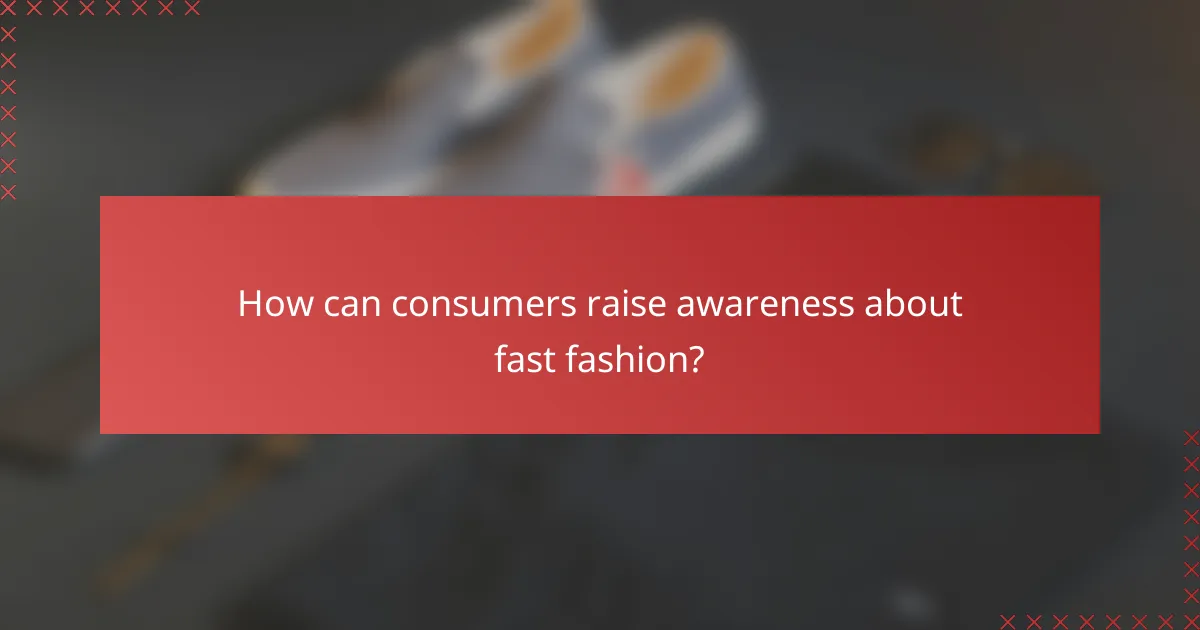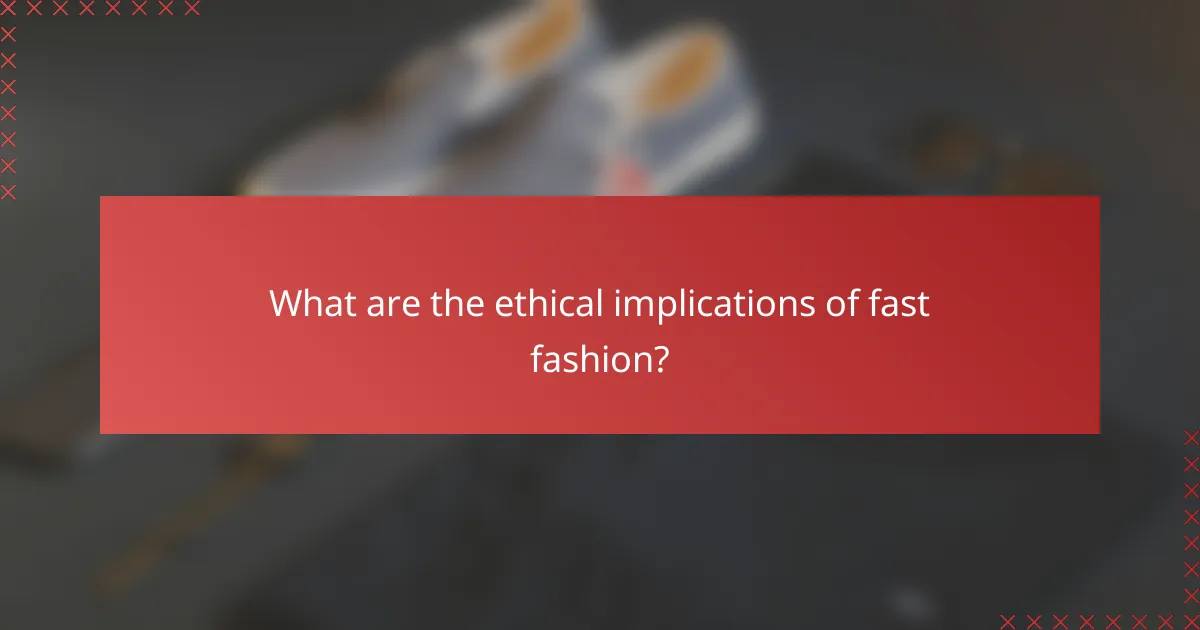Fast fashion poses a significant threat to sustainability, particularly in the UK, by encouraging rapid production that harms the environment and depletes resources. As consumers become more aware of these issues, they can make informed choices by supporting eco-friendly brands and opting for second-hand clothing, thereby promoting ethical practices in the fashion industry.

How does fast fashion impact sustainability in the UK?
Fast fashion significantly undermines sustainability in the UK by promoting rapid production cycles that lead to environmental harm, resource depletion, and increased waste. The industry’s focus on low-cost, high-volume clothing often comes at the expense of ecological health and responsible consumption.
Environmental degradation
Fast fashion contributes to environmental degradation through the extensive use of harmful chemicals in textile production and the pollution generated during manufacturing processes. Water bodies often become contaminated with dyes and toxins, affecting local ecosystems and communities.
Additionally, the cultivation of cotton and other raw materials frequently involves deforestation and habitat destruction. This loss of biodiversity can have long-lasting effects on wildlife and natural landscapes in the UK and beyond.
Resource depletion
The fast fashion industry heavily relies on finite resources, particularly water and fossil fuels. For instance, producing a single cotton t-shirt can require thousands of liters of water, straining local water supplies and contributing to scarcity.
Moreover, the reliance on synthetic fibers, such as polyester, derived from petroleum, exacerbates the depletion of non-renewable resources. As demand for cheap clothing rises, the pressure on these resources intensifies, leading to unsustainable practices.
Waste generation
Fast fashion generates significant waste, with millions of tons of clothing ending up in landfills each year in the UK. Many garments are discarded after only a few wears, as trends change rapidly and consumers seek the latest styles.
To combat this issue, consumers can adopt practices such as buying second-hand or investing in higher-quality, timeless pieces. Additionally, recycling and upcycling clothing can help reduce the overall waste generated by the fast fashion model.

What choices can consumers make for sustainable fashion?
Consumers can make impactful choices for sustainable fashion by selecting eco-friendly brands, opting for second-hand clothing, and supporting local artisans. These decisions not only reduce environmental harm but also promote ethical practices within the fashion industry.
Opt for eco-friendly brands
Choosing eco-friendly brands is a significant step toward sustainable fashion. These brands typically use organic materials, sustainable production methods, and ethical labor practices. Look for certifications like GOTS (Global Organic Textile Standard) or Fair Trade to ensure the brand meets sustainability criteria.
When shopping, consider brands that offer transparency about their supply chains and environmental impact. Many eco-friendly brands also provide information on their carbon footprint and waste management practices, helping consumers make informed decisions.
Choose second-hand clothing
Buying second-hand clothing is an effective way to reduce waste and extend the life of garments. Thrift stores, consignment shops, and online platforms like Depop or Poshmark offer a wide range of pre-owned items at lower prices than new clothing. This not only saves money but also lessens the demand for new production.
When selecting second-hand items, check for quality and durability. Look for well-made pieces that can withstand wear and tear, ensuring they remain in your wardrobe longer. Additionally, consider organizing clothing swaps with friends to refresh your wardrobe sustainably.
Support local artisans
Supporting local artisans contributes to sustainable fashion by promoting handmade, unique pieces while reducing the carbon footprint associated with mass production and shipping. Local artisans often use sustainable materials and traditional techniques, ensuring a smaller environmental impact.
To find local artisans, explore craft fairs, farmers’ markets, or online platforms that focus on handmade goods. Investing in these products not only supports the local economy but also fosters a more sustainable and ethical fashion landscape.

How can consumers raise awareness about fast fashion?
Consumers can raise awareness about fast fashion by actively sharing information and engaging in conversations about its environmental and social impacts. By leveraging social media and community discussions, individuals can influence others and promote more sustainable fashion choices.
Participate in social media campaigns
Joining social media campaigns is an effective way to spread awareness about fast fashion. Platforms like Instagram, Twitter, and TikTok allow users to share informative posts, videos, and graphics that highlight the negative effects of fast fashion on the environment and labor practices.
Consider using popular hashtags related to sustainability, such as #FashionRevolution or #WhoMadeMyClothes, to connect with a broader audience. Engaging with these campaigns can amplify your message and encourage others to rethink their purchasing habits.
Engage in community discussions
Participating in local community discussions can foster a deeper understanding of fast fashion’s impact. Attend workshops, forums, or events focused on sustainable fashion to share insights and learn from others. These gatherings often provide a platform for exchanging ideas and strategies for promoting ethical consumption.
Encourage friends and family to join these conversations, as personal connections can significantly influence attitudes toward fashion choices. Creating a local group dedicated to sustainable practices can also help maintain momentum and keep the topic alive in your community.

What are the ethical implications of fast fashion?
The ethical implications of fast fashion primarily revolve around labor practices and environmental sustainability. This industry often prioritizes low costs and rapid production over humane working conditions and eco-friendly practices, leading to significant social and environmental consequences.
Labor exploitation
Labor exploitation in fast fashion is a pressing issue, as many workers in developing countries face poor working conditions, long hours, and minimal pay. Reports indicate that wages can be as low as a few dollars per day, often failing to meet basic living standards.
Workers are frequently subjected to unsafe environments, with limited rights and no job security. This exploitation is often hidden from consumers, who may unknowingly support brands that prioritize profit over people.
Fair trade practices
Fair trade practices aim to ensure that workers receive fair wages and work in safe conditions. Brands that adopt fair trade principles often pay a premium for their products, which helps improve the livelihoods of workers and promotes sustainable practices.
Consumers can support fair trade by looking for certifications on clothing labels, such as Fair Trade Certified or similar marks. Choosing brands committed to ethical sourcing can drive change in the fast fashion industry and encourage more responsible production methods.

How does fast fashion affect consumer behavior?
Fast fashion significantly influences consumer behavior by promoting rapid purchasing decisions and altering brand loyalty. Shoppers are often drawn to low prices and trendy styles, leading to impulsive buying and a shift in how they perceive value in clothing.
Impulse buying trends
Impulse buying is a common trend in fast fashion, driven by frequent sales and new arrivals. Retailers often create a sense of urgency through limited-time offers, encouraging consumers to make quick decisions without thorough consideration.
Many consumers find themselves purchasing items they don’t need, influenced by marketing tactics such as social media promotions and influencer endorsements. This behavior can lead to overconsumption and increased waste, as many of these items are discarded after minimal use.
Brand loyalty shifts
Fast fashion has altered traditional brand loyalty, with consumers frequently switching between brands based on current trends and pricing. Shoppers may prioritize affordability and style over long-term relationships with specific brands, leading to a more transactional approach to clothing purchases.
This shift can challenge established brands to adapt their strategies, focusing on sustainability and ethical practices to retain customers who are becoming more conscious of their purchasing choices. Brands that fail to innovate may lose market share to newer, trendier competitors that align better with consumer values.

What are the economic impacts of fast fashion?
Fast fashion significantly affects economies by creating jobs in developing countries while also contributing to market volatility. The rapid production cycles and low-cost strategies can lead to both positive and negative economic consequences for various stakeholders.
Job creation in developing countries
Fast fashion brands often outsource production to developing nations where labor is cheaper, leading to job creation in these regions. This influx of employment can provide income for many families, lifting some out of poverty.
However, the jobs created are frequently low-paying and lack benefits, with workers facing poor working conditions. For example, garment workers in countries like Bangladesh may earn wages that are just above the poverty line, making it crucial for consumers to consider the ethical implications of their purchases.
Market volatility
The fast fashion industry contributes to market volatility due to its reliance on rapid trends and consumer demand. Brands often overproduce to meet fast-changing styles, leading to surplus inventory that can destabilize prices.
This volatility can harm local economies, particularly in countries that depend heavily on garment exports. When demand fluctuates, it can result in sudden layoffs and economic downturns in these regions, highlighting the need for more sustainable production practices.

How can e-commerce platforms promote sustainable fashion?
E-commerce platforms can promote sustainable fashion by prioritizing eco-friendly brands, offering transparent supply chain information, and implementing sustainable practices in their operations. By doing so, they can influence consumer choices towards more responsible purchasing habits.
Highlighting Sustainable Brands
E-commerce platforms should feature sustainable brands prominently on their sites. This can include dedicated sections for eco-friendly products, showcasing brands that use organic materials or ethical labor practices. By making these options easily accessible, platforms can guide consumers towards making more sustainable choices.
Providing Transparency
Transparency in the supply chain is crucial for promoting sustainable fashion. E-commerce platforms can provide detailed information about the sourcing, manufacturing processes, and labor conditions of the products they sell. This empowers consumers to make informed decisions and encourages brands to maintain ethical practices.
Implementing Eco-Friendly Practices
Platforms can adopt eco-friendly practices such as reducing packaging waste, offering carbon-neutral shipping options, and encouraging recycling programs. For instance, implementing a return policy that minimizes waste can significantly impact sustainability. These initiatives not only enhance brand reputation but also attract environmentally conscious consumers.
Educating Consumers
Education is key to fostering awareness about sustainable fashion. E-commerce platforms can provide resources such as articles, videos, and infographics that explain the impact of fast fashion and the benefits of sustainable choices. Engaging consumers through informative content can lead to a more sustainable shopping culture.
